News & Blogs
The Higan (彼岸) is a Japan-specific event based on Buddhism.
The traditional sweets to please the spirits who belong to this and other worlds.
Playful and colorful Botamochi (ぼた餅) and Ohagi (おはぎ) are trending on social media.
In this blog, we touch on diverse topics about Japanese food cultures, practices together with the culinary secret, TREHA®, and its important role in the Japanese food industry. We hope our blog helps you obtain in-depth knowledge of the secrets and science behind Japanese cuisine, shared from our kitchen, to yours.
The Higan (彼岸), a Buddhist event unique to Japan, is held during the week of the spring and autumnal equinoxes.
March 18 to March 24, 2022 is the Spring Higan period in Japan. Higan, a Buddhist event exclusive to Japan with a long history since the middle of the Heian period (9th - 11th centuries), is celebrated for seven days, including three days before and after the spring equinox and autumnal equinox. The Japanese visit graveyards to clean gravestones, clean Buddhist altars at home, and participate in a Buddhist memorial service called Higan-e (彼岸会) at familiar temples.
Higan (彼岸) is originally a Buddhist term that refers to another world beyond, which is believed to exist towards the west. On the spring and autumnal equinoxes, the sun sets in the direct west, making the length of daytime and nighttime equal. Therefore, these days are believed to provide a timeframe creating the shortest distance between this world and another world. Act of respect to the ancestors would eventually guide people of this world to join their ancestors residing in the Pure Land of Paradise.
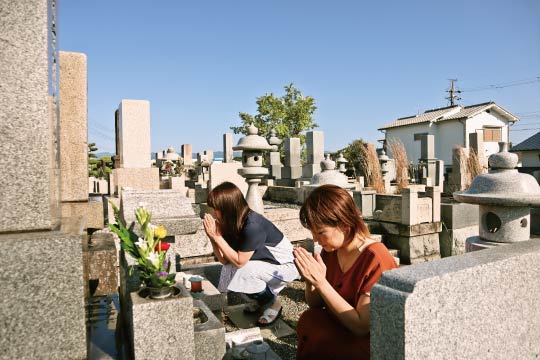
Indispensable Japanese sweets for the Higan - "Botamochi (ぼた餅)" and "Ohagi (おはぎ)"
The Higan period’s offering to the ancestors includes must-have Japanese sweets called "Botamochi" or "Ohagi," a rice cake made of glutinous rice or a combination of glutinous and regular rice wrapped in red bean paste. Many regions throughout Japan are less diligent about differentiating the rice cakes between two Higan periods nowadays, but traditionally it is common to use separate names; botamochi for spring and ohagi for autumn. On the other hand, the rice cakes prepared for the autumnal equinox are called "Ohagi" and wrapped in chunky bean paste (粒あん tsubu-an), which resembles “Hagi 萩” meaning Japanese bush clover blooming in fall. Many regions throughout Japan are less diligent about differentiating the rice cakes between two Higan periods nowadays, but traditionally it is common to use separate names; botamochi for spring and ohagi for autumn.
As for the differences other than the name, botamochi for spring Higan is made of pureed red bean paste (こしあん Koshian), while ohagi for autumn Higan is usually made of chunky bean paste, which are supposedly determined by the freshness of available beans. Since red azuki beans are harvested around autumn featuring a pleasant aroma and soft skin, chunky, whole bean paste is used for ohagi in the autumn Higan to take advantage of the new crop. On the other hand, the spring Higan allows only choice to use stored, hardened azuki beans to make the bean paste, which is pureed to a smooth texture without skins to make botamochi, a spring version of rice cake.
Several legends exist for why special rice cakes were offered or consumed during the Higan periods. Since the red color was believed to have the magical power to fend off evil since ancient times, azuki beans have been used in festivals in combination with rice, symbolizing a good harvest. Subsequently, the botamochi and ohagi rice cakes have been offered to purify and comfort the ancestors’ spirits during the Higan periods.
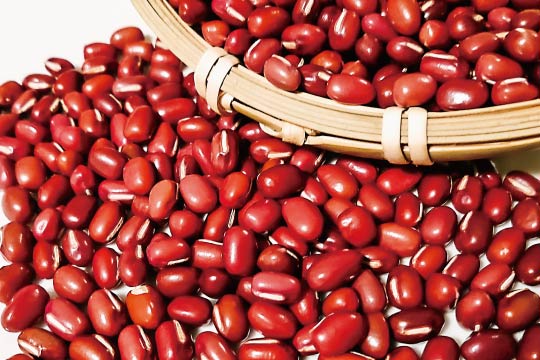
Botamochi (ぼた餅) and Ohagi (おはぎ) come in a variety of colors.
The rice cakes are also coated with materials other than bean paste. The rice cakes seen at a retail store are often packaged in a set of three. The coatings of two rice cakes are typically bean paste and roasted soy flour (kinako きな粉) made by grinding roasted soybean. However, the remaining rice cake varies by region, reflecting its local taste and preference. Black sesame seeds are more common in eastern Japan, while green laver has long been popular in western Japan. In the southern part of the Tohoku region, “Zunda” paste (mashed edamame or fava beans) is preferred as a local delicacy.
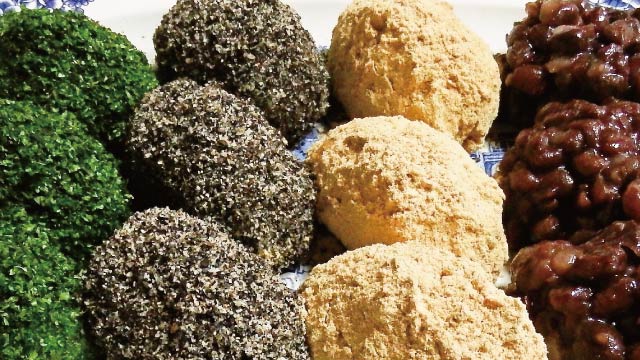
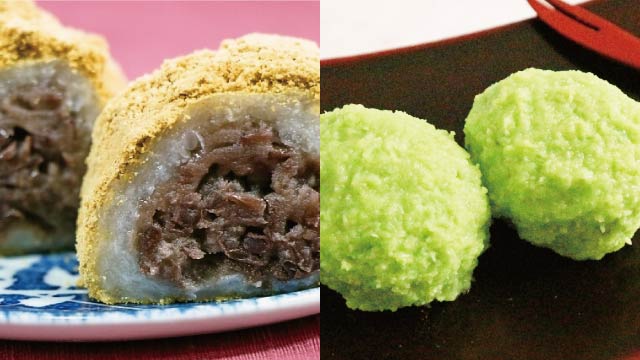
Due to the increasing number of colorful, cute (kawaii) and Instagram-able varieties, Ohagi is gaining popularity among the youth. Besides traditional bean paste, non-traditional ingredients such as cranberries, mangoes, nuts, butter, and other western ingredients help old Japanese sweets evolve into a retro-modern dish. As it is easy to imagine, they are sold and consumed all year round beyond the timeframes of Higan. Botamochi and ohagi have uniquely transformed into popular traditional sweets among youngsters during its millennial history. There is an even more unique and slightly disturbing aspect to it. It is their alias names. As mentioned earlier, botamochi and ohagi are pounded rice coated with various materials.
In general, the rice cake for botamochi is pounded until there are no grains left, nicknamed "mina-goroshi (皆殺し)" or "hon-goroshi (本殺し),” meaning "killed out." The rice cake for Ohagi is often pounded until a few grains remain, nicknamed "han-goroshi (半殺し),” meaning "nearly killed." Despite its deliciousness, they have been given such barbaric nicknames, which are made into a subject of Rakugo (traditional comic storytelling).
Which type would you like to try making? If you do, do you opt to "kill out" or "nearly kill the rice?
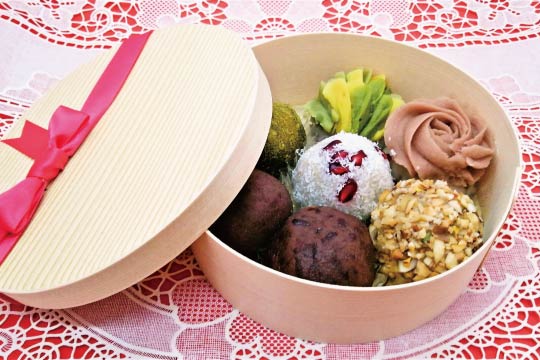
Did you find this blog interesting?
Please share it with your friends in the food service industry.
We regularly update the blog about the food culture of Japan, where TREHA® was discovered for culinary applications.
Click here and send us a message to subscribe.
Or hit us up on Instagram @trehalose_sensei!
You might also be interested in:
Japanese traditional food series 2: Chitose Ame, candy for healthy longevity (千歳飴)
Japanese traditional food series 3: Yuzu (柚子) and the winter solstice
Japanese traditional food series 4: Noodles on New Year's Eve (年越しそば)
Japanese traditional food series 5: Japanese traditional New Year’s dishes, Osechi-ryori (おせち料理)
Japanese traditional food series 6: Another traditional food for New Year’s celebration, mochi (餅)
Japanese traditional food series 13: Inari sushi offered to a deity of harvests

